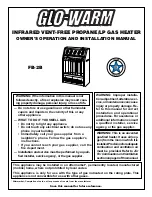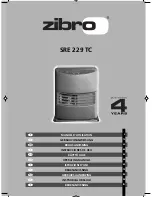
the back of the heater (fig. 13). Then, open the shut-off va-
lve upstream the heater and the hot water valve on the tap
and let out the quantity of water that is necessary to deaerate
the heater. The installation of the DAFI heater in this system
enables its installation next to the shower enclosure or under
the wash basin or sink with the three-way faucet. It also ma-
kes the supply of the heated water to several receipt points
possible. The heater with the connector may operate in any
position.
It is required to close the shut-off valve before the disassem-
bly of the heater or before each operational break longer than
12 hours
7.3 Installation of the heater to the three-way
faucet
Use only the DAFI heater with the protection degree
of IPX 4 for this type of installation.
The DAFI shut-off valve must be installed directly at
the inlet of water to the heater.
Before the installation of the heater, while turning on
the DAFI shut-off valve, let the necessary water flow
through it in order to remove the contamination and
air which are present inside the water system. Con-
nect the DAFI heater, using the reducing nipples and
hoses for the shut-off valve and the tap. Then, open
the valve that shuts off the water supply to the heater
and the hot water valve on the tap and let out the wa-
ter quantity that is necessary to deaerate the heater.
8. Operation
NOTE!
Before connecting the heater to the wiring system,
deaerate the heater (see section 7.1.h, 7.2 and 7.3).
If the air flows out instead of water during the use,
close the water supply immediately and disconnect
the power supply for the heater. Power supply may
be switched on again after the heater is deaerated.
Do not switch on the heater, if it is likely that the
water in the heater is frozen (as mentioned above
in warning from section 6.1).
The contamination of the aerator may cause:
- reduction or total disappearance of water outflow,
- excessive heating of water or such decrease in
the water outflow which prevents the heater from
being switched on.
fig 10
fig 11
a
b
fig
12
cold
water
hot
water
fig
13
fig 9






























